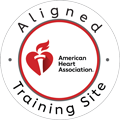In moments of crisis, having the knowledge and skills to respond effectively can make all the difference between life and death. Basic Life Support (BLS) training equips individuals with the tools to intervene during emergencies, and at its core lies the ABCD approach – Airway, Breathing, Circulation, and Defibrillation. This article delves into the significance of mastering ABCD in BLS training, highlighting its role in saving lives and promoting community safety.
According to statistics, cardiac arrest can strike anyone, anywhere, at any time. Each year, thousands of lives are lost due to delays in emergency response or inadequate intervention. However, with proper BLS training, individuals can become empowered to act swiftly and effectively, and significantly increase the chances of survival for those in need.
Understanding ABCD: The Foundation of BLS
The ABCD approach serves as the fundamental framework for BLS interventions, guiding responders through a systematic assessment and intervention process.
- Airway: The first step in BLS is ensuring a clear airway for breathing. In emergencies, airway obstructions can quickly become life-threatening, preventing oxygen from reaching the lungs and vital organs.
- Breathing: Assessing and maintaining proper breathing is essential for sustaining life. BLS training teaches responders to recognize signs of inadequate breathing and intervene promptly with rescue breaths if necessary.
- Circulation: Evaluating and supporting circulation is crucial for delivering oxygenated blood to the body’s tissues and organs. Techniques such as chest compressions are taught in BLS training to help restore circulation in individuals experiencing cardiac arrest.
- Defibrillation: Defibrillation plays a critical role in restoring normal heart rhythm during cardiac emergencies. AEDs, or Automated External Defibrillators, are used to administer controlled electric shocks to the heart, increasing the chances of successful resuscitation.
Real-life examples underscore the importance of each component in the ABCD sequence. From clearing a blocked airway to administering chest compressions and defibrillation, every step in the process can mean the difference between life and death.
Call Us Now
Get the Best CPR Class in Kansas City Today!
Training in Action: Applying ABCD Principles
BLS training courses provide hands-on instruction and practice in applying ABCD principles in real-world scenarios. Participants learn to assess and intervene quickly and decisively, simulating emergency situations under the guidance of trained instructors.
- Recognizing Airway Obstruction: Participants are taught to recognize signs of airway obstruction and intervene promptly to clear the airway using techniques such as the head tilt-chin lift or jaw thrust maneuver.
- Assessing Breathing: Proper assessment of breathing involves observing chest rise and fall, listening for breath sounds, and feeling for air movement. If breathing is absent or inadequate, rescue breaths are initiated to provide oxygenation.
- Performing Chest Compressions: Participants learn the proper technique for performing chest compressions, including hand placement, compression depth, and rate. Chest compressions help maintain circulation and deliver oxygenated blood to vital organs.
- Using an AED: BLS training includes instruction on the use of AEDs, including how to apply electrode pads, operate the device, and deliver a shock if indicated. AEDs are invaluable tools in restoring normal heart rhythm and improving outcomes in cardiac emergencies.
Effective teamwork and communication are emphasized throughout BLS training, as responders often work together to assess the situation, perform interventions, and coordinate with emergency medical services (EMS) personnel.
Challenges and Best Practices
While BLS training equips individuals with essential life-saving skills, several challenges may arise in applying ABCD principles in real-life scenarios. These challenges include:
- Time Constraints: In emergency situations, responders may face time constraints, requiring quick decision-making and prioritization of interventions.
- Stress and Anxiety: Responding to emergencies can be stressful and anxiety-inducing, affecting performance and decision-making abilities.
- Lack of Resources: Limited access to equipment or trained personnel may pose challenges in delivering optimal care during emergencies.
To overcome these challenges, responders are encouraged to:
- Stay Calm and Focused: Maintaining composure and focus is essential in emergency situations. Taking a moment to assess the situation and formulate a plan can help responders respond effectively.
- Practice Regularly: Ongoing training and practice are essential for maintaining proficiency in BLS skills. Regular drills and simulations can help responders stay prepared and confident in their abilities.
- Seek Support: Seeking support from peers, mentors, or mental health professionals can help responders cope with stress and anxiety associated with emergency response.
In summary, delving into the foundational principles of Basic Life Support (BLS) training, particularly the ABCD approach, is pivotal for anyone seeking to be prepared for emergencies. With CPR Kansas City serving as an esteemed American Heart Association training site, offering comprehensive courses including CPR certification Kansas City and BLS certification Kansas City, individuals have the opportunity to gain a deep understanding of life-saving techniques. The stress-free and hands-on nature of the classes provided by CPR Kansas City ensures that participants receive practical, skill-focused education that prepares them to respond effectively in critical situations. By investing in BLS certification through reputable training sites like CPR Kansas City, individuals not only acquire essential life-saving skills but also contribute to building safer and more resilient communities in Kansas City. Thus, embracing BLS training and certification serves as the building blocks of survival, empowering individuals to act swiftly and confidently when faced with emergencies, and ultimately making a significant difference in saving lives.


